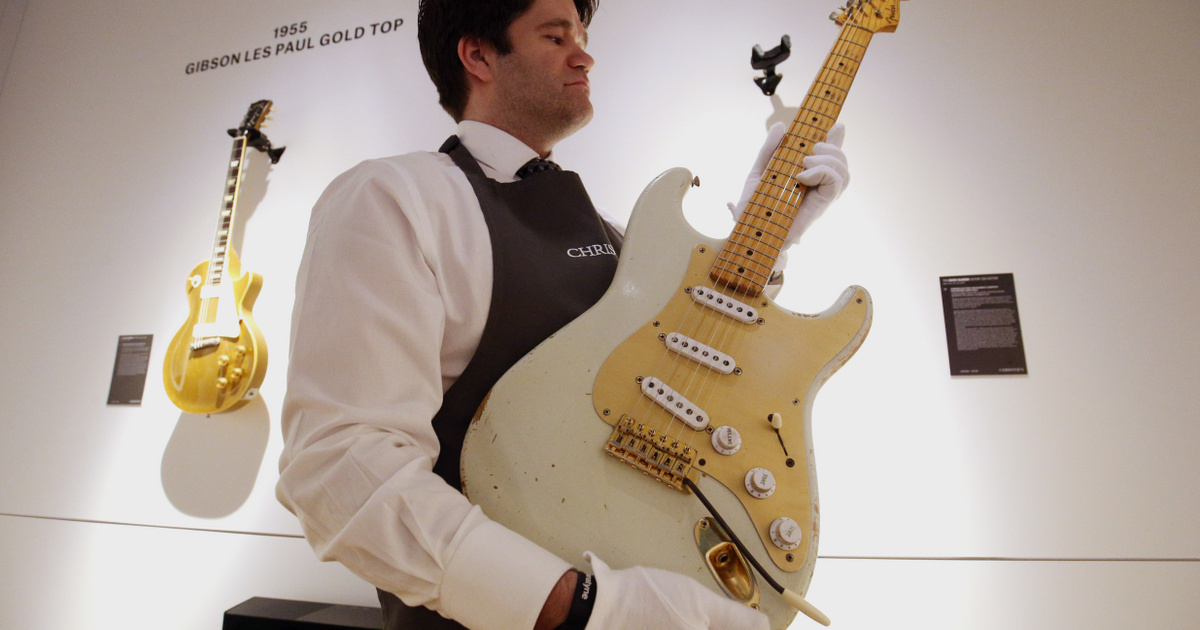Although it would be appropriate to begin the history of electric guitars with the Fender Telacaster – the first solid-body guitar produced in series form – the other legend, the successor to the Stratocaster, was introduced in 1954, exactly 70 years ago. Every family needs one, guitarists say about the instrument, the structure of which has not changed since then. You know, it's very universal.
A Stratocaster in the hands of legends
So before we get into the fast-paced history of the electric guitar, let's see why, or rather, who, the Fender Stratocaster is a legendary instrument. Let's start with Shadows' lead guitarist, Hank Marvin, and then Dire Straits' Mark Knopfler produced the clear sound he knew. A favorite instrument of blues players from Buddy Guy to Steve Ray Vaughan to Eric Clapton. David Gilmour made the bright, distorted sound a trademark of Pink Floyd. Jeff Beck coaxed jazz rock, Ritchie Blackmore hard rock, and Yngwie J. Malmsteen into the virtuosity of the instrument. And the person who brought out his dark, wild personality from a guitar designed for bright, ringing sounds was none other than Jimi Hendrix.
This list is clear evidence of the Stratocaster's versatility – and how powerfully it defined the sound of rock 'n' roll.
In our small village, it is the main tool for people like Sandor Bencic, Janus Rudolf Toth, I'm gonegabor madarasz, Mihaly MuricVilmos Sarvar.
Vibration arm from vibration
Leo Fender intended the Telecaster to be a further development for Western and country guitarists, so he equipped the instrument with a vibrato arm. With the help of this lever, the string can be lowered or extended, i.e. the pitch can be changed while playing.
The system was developed by Paul Bigsby, as well as his guitar company, and has also been used by Gretsch, Gibson, and Ibanez. (Bigsby was the first to produce a guitar head with the tuning keys on one side, which Fender took over and became a sort of trademark for their guitars.)
Leo Fender called the tremolo a tremolo arm.
(For example, vibrato is balalaika plucking, i.e. it has nothing to do with pitch.)
Mr. Liu wanted to compete with the Strat by using a Gibson Les Paul guitar. The design began in 1951, when the Telecaster, the predecessor to the Telecaster, was introduced just as Gibson was producing the Les Paul. The body contour was taken from their Precision Bass (the world's first solid body bass guitar).
Buddy Holly has nailed it
Not yet intended for rock 'n' roll, country and western swing musicians, the new instrument was created and tested by Rex Gallion (studio musician), Bill Carson (for whom Strats were designed) and Freddy Tavares (designer, engineer and musician). Gallion recommended that the front and back of the streamer should not be straight, but should be hollow at the arms and chest for comfort reasons, i.e. not cutting into the forearm or ribs.
Despite everything, the Stratocaster failed, guitarists didn't take it seriously, and didn't even buy it.
Only a few, like Dick Dale, innovator of rock music, or Buddy Merrill (member of the Lawrence Welk Show Band), or Eddie Clitro (leader of the TV show Forman Phillips Presents, or Eddie Clitro and the Western Variety Band) or Alvino Rey (guitarist Jazz, talking box – through a tube, the player modulates the sound of the guitar with his mouth, similar to speech – inventor of the effect).
There was nothing to do, Mr. Liu further developed the universal guitar with three pickups and a five-position pickup switch, which reached its current state by 1957. In addition, it was also played when Buddy Holly played the Strat in The Ed Sullivan Show. Beach Boys guitarist Al Jardine conquered surf music with a Fender. Then came Jimi Hendrix who gave a new meaning to playing the guitar, showing what was inside the Stratocaster.












































